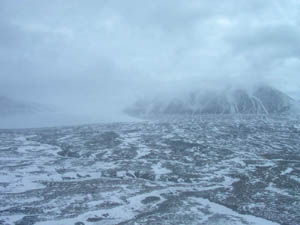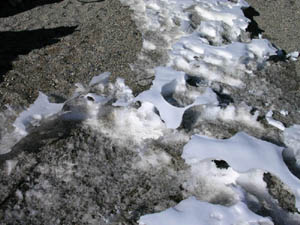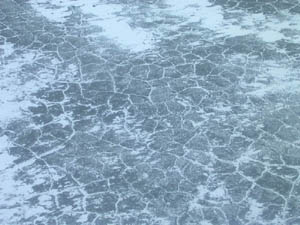Home|Glossary|Links|Journal|Maps
The
majority of our day, however, is spent visiting streams (or channels
that will become streams as the season progresses). As we've helicoptered
and hiked around, we've noticed some strange things that we don't
see at home.
Do you have any ideas
about what causes them?
Click on the pictures to have a larger view
|
Snow
In the first
report we told you that the Dry Valleys receive the equivalent
of only 6 mm of water each year on average.
Yet
photos like this one show a good deal of snow.
What's
up with that? click
to view the answer
|
|
|
|
Funny
snow melt patterns
Since we've
arrived, we've been watching the snow slowly melt. Sometimes
it melts in funny ways, like this patch of snow by our F6 hut.
What's going
on here?
(Hint: the snow that was around this white snow tower had dirt
on it.)
Click to view the answer
|
Desert
pavement
Some parts of the valleys have what look like mosaic floors
or cobblestone plazas. There is layer of densely packed rock
on top of soil that has lots of sand and only a few rocks.
This type of covering is known as desert pavement.
How
do you think desert pavement forms? What do you think it's
like hiking on it?
Click
to view the answer
|
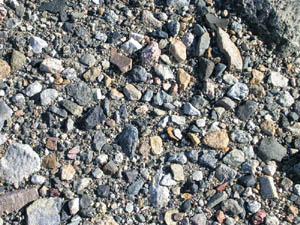
Desert Pavement Top View |
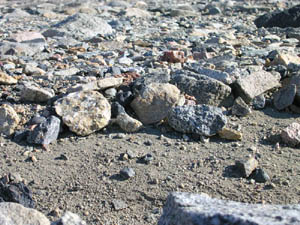 Desert Pavement
Side View
Desert Pavement
Side View |
|
Polygons
When we fly over the Dry Valleys, one feature that leaps
out are polygonal patterns on the ground, like the ones seen
in this photo. Walking around we see that the polygons are about
20 to 30 feet across. The center of the polygons is raised and
the borders are gullies that are a foot deep.
What
do you think causes the polygonal ground patterns? (Hint: They
are also found in other areas where temperatures are usually
below freezing, such as the Arctic and on high mountains.)
Click
to view the answer
|
|
John and Karen

